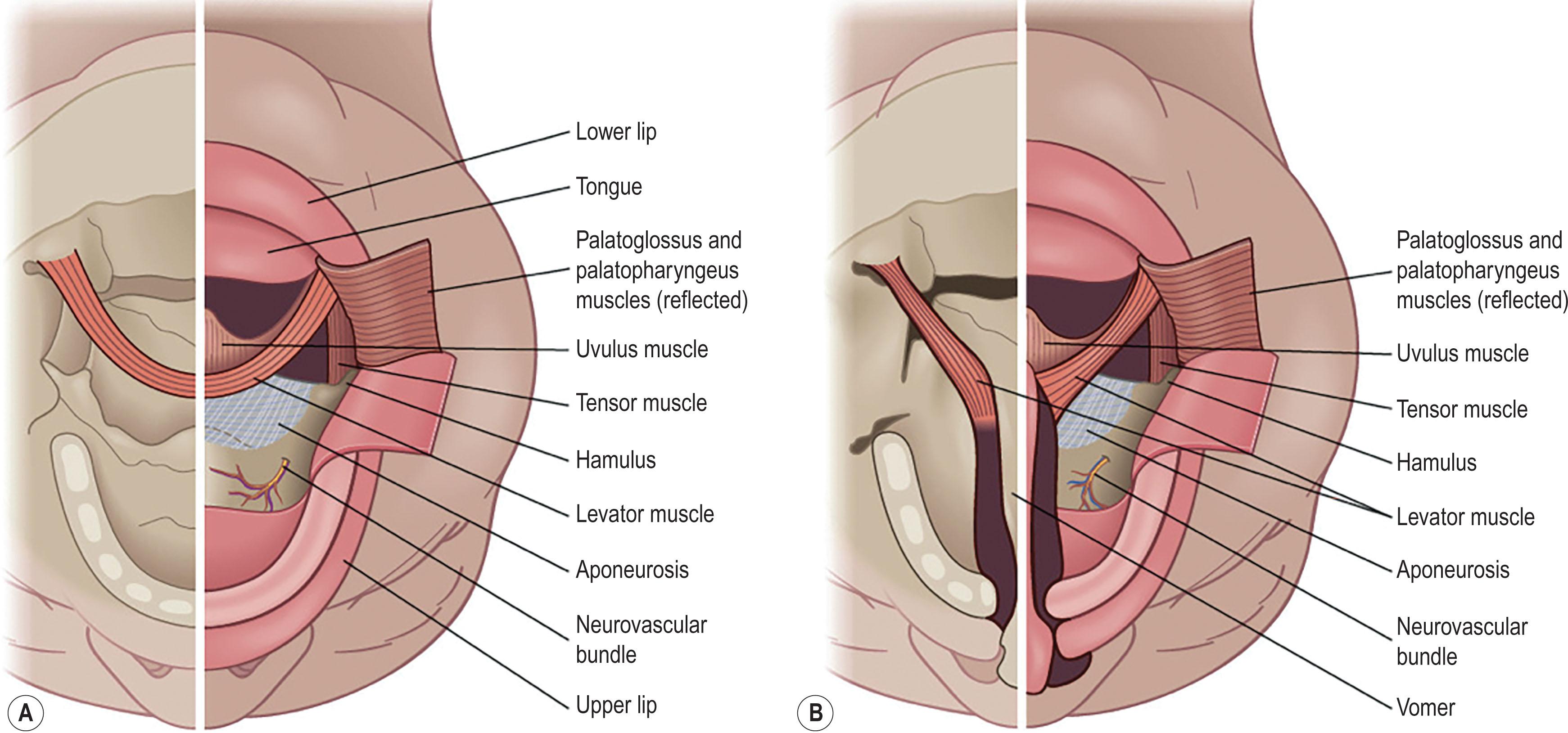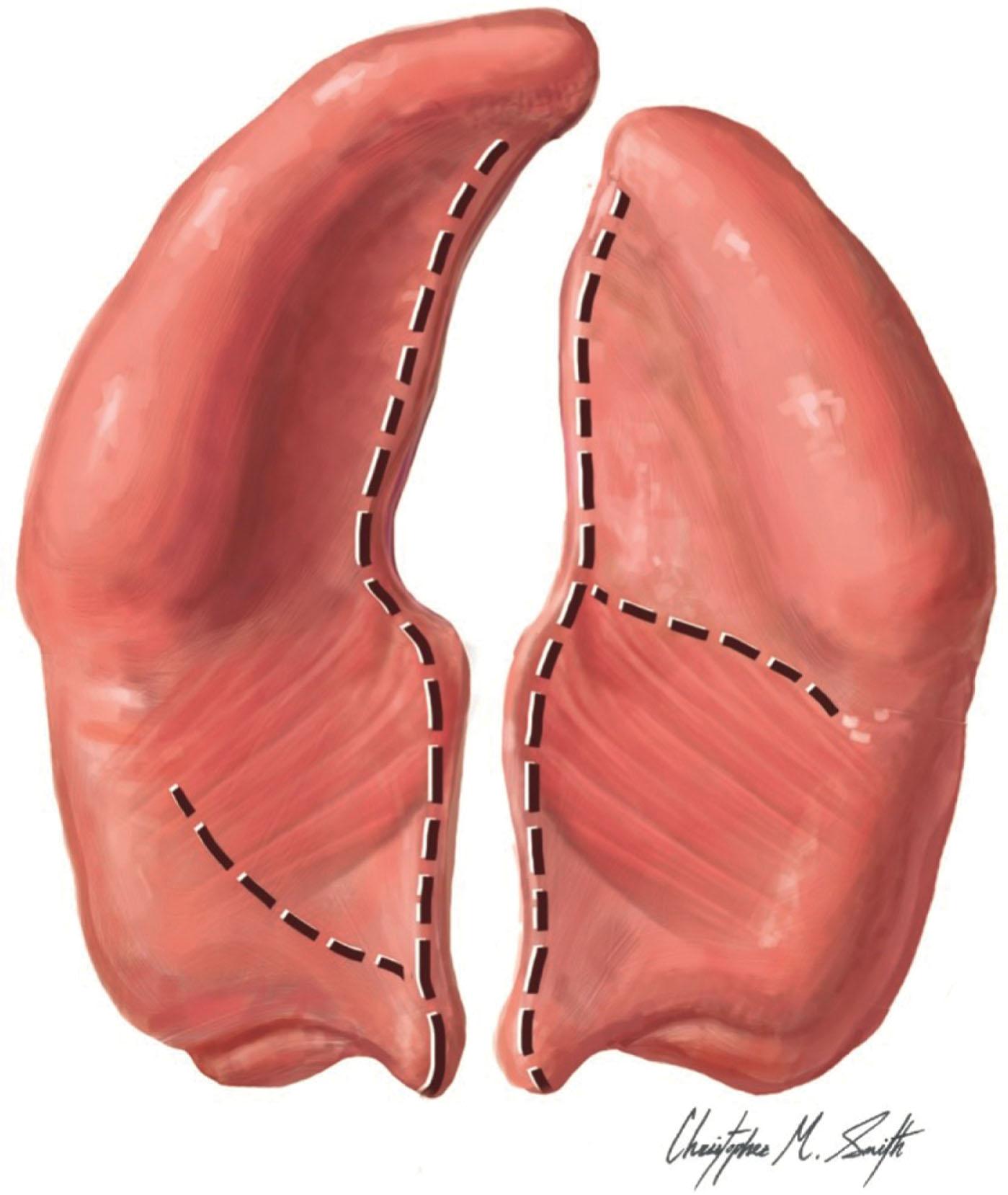Physical Address
304 North Cardinal St.
Dorchester Center, MA 02124
Access video content for this chapter online at Elsevier eBooks+ ![]()
The double opposing Z-palatoplasty technique for soft palate repair was first presented in the United States by Leonard Furlow at the Southeastern Society of Plastic Surgeons Annual Meeting in 1978. Dr. Furlow pioneered the technique in his own plastic surgery practice at the University of Florida in 1976. At that time, the standard of care for palate repair in most centers was either a combination of the von Langenbeck procedure with a V–Y pushback palatoplasty or a two-stage palate repair with early soft palate straight-line repair followed by repair of the hard palate at a later date. Dr. Furlow noted that only 50%–70% of patients undergoing von Langenbeck/V–Y pushback palatoplasty developed normal speech after palate repair. Believing the etiology of poor speech outcomes to be related to velar shortening, he proposed using mirror-image double opposing Z-plasties in order to lengthen the soft palate and reorient the levator muscles posteriorly, recreating the levator sling. Furlow’s technique from his sentinel article is illustrated in Fig. 21.3.1 .

When Dr. Furlow first presented his new approach to palate repair at the Southeastern Society of Plastic Surgeons meeting, his presentation included only a small series of three patients and their short-term outcomes. Peter Randall, MD, from the Children’s Hospital of Philadelphia, was present at this meeting and believed the technique to be a promising and innovative way to approach palatoplasty. Dr. Randall began performing his palatoplasty using the Furlow double-opposing Z-plasty technique in 1979 and published his own outcomes in 106 patients in 1986, the same year that Leonard Furlow first published his results in a smaller series of patients. Modifications proposed by Dr. Randall in his sentinel article included the addition of lateral relaxing incisions and vomer flaps as needed for tension-free closure ( Fig. 21.3.2 ) and the utilization of a posterior pharyngeal flap in cases where the palate was deemed to be very short ( Fig. 21.3.3 ). Preliminary speech outcomes in Dr. Randall’s series were encouraging, and minimal postoperative complications were observed. Similarly, in Dr. Furlow’s series, 18 of his 22 patients demonstrated normal resonance postoperatively, and two had only mild velopharyngeal dysfunction on initial speech evaluation, further supporting the efficacy of the Furlow palatoplasty in improving speech outcomes.


Concurrent with Dr. Furlow’s presentation in 1978, Claus Walter and Hans-Henning Meisel of Germany published a very similar technique of velar repair in the Journal of Maxillofacial Surgery . Their technique varied from Furlow’s technique in that they advocated leaving the muscle attached to the nasal/oral mucosal flaps and did not specifically retain the muscle within the posteriorly-based flaps. Their original article noted adequate postoperative healing but did not report speech outcomes. Although Walter and Meisel’s technique was published around the same time as Dr. Furlow’s first presentation of his technique, the double opposing Z-palatoplasty has been classically referred to as the “Furlow palatoplasty”.
The palate is composed of the primary and the secondary palate. The primary palate includes structures anterior to the incisive foramen, whereas the secondary palate includes the structures of the hard palate posterior to the incisive foramen along with those of the soft palate. The soft palate is composed of oral and nasal mucosa, the levator veli palatini (LVP) muscle, which forms a sling across the central portion of the velum in non-cleft patients, as well as the tensor veli palatini, palatoglossus, palatopharyngeus, and muculus uvulae. The levator muscle originates along the posterior aspect of the Eustachian tube, at the junction of the bony and cartilaginous segments; its insertion in non-cleft patients is the contralateral LVP at the palatal midline. Palatoglossus and palatopharyngeus are also present within the soft palate; the palatoglossus muscle originates along the dorsolateral tongue and fans out along the superficial aspect of the soft palate and palatopharyngeus has a superior and inferior heads that originate along the nasal and oral surfaces of LVP, respectively, forming the posterior tonsillar pillar. The anterior 25% of the soft palate is relatively static and contains the tensor veli palati muscle, which originates along the greater wing of the sphenoid and Eustachian tube and inserts onto the hamulus, forming the tensor aponeurosis. The posterior 25% of the soft palate includes the palatopharyngeus, palatoglossus, and muscularis uvulae muscles. The muscularis uvulae originates on the tensor aponeurosis and terminates at the uvular base.

In patients with a cleft palate, the palatal musculature is oriented longitudinally along the margin of the cleft and the LVP does not form the normal muscular sling ( Fig. 21.3.4B ). Without an intact levator sling, the soft palate is unable to elevate properly for speech. Restoration of the levator sling, normal velopharyngeal function, and anatomic palatal integrity are essential elements of cleft palate repair.
The Z-plasty was first described in the plastic surgery literature by Charles Denonvilliers of Paris in the mid-nineteenth century. David Furnas published an article in 1968 defining the four fundamental functions of the Z-plasty to be: (1) increase length, (2) break up a straight line, (3) shift topographic features from one place to another, and (4) to efface or create a web or a cleft. A basic Z-plasty design involves the creation of two triangular flaps along a shared straight line, allowing for their positions to be reoriented in a horizontal fashion. This accomplishes Furnas’ principles, creating length and diminishing the scar contraction that occurs along the straight-line vector.
In the context of the Furlow palatoplasty, mirror image Z-plasty patterns are designed on the oral and nasal surfaces of the soft palate. The posteriorly oriented flaps contain the LVP muscle along with either oral or nasal mucosa, whereas the anteriorly based flaps only contain mucosa. For the benefit of right-handed surgeons, the posteriorly based flap on the oral side is typically marked on the left side of the palate and the anteriorly based flap is typically marked on the right side. It is important to note that the Z-plasty design is based on the underlying palatal anatomy and not on a predetermined geometric pattern. Thus, the Z-plasty limb of the oral myomucosal flap is marked from the hook of the hamulus, along the posterior edge of the hard palate, and to the cleft margin. On the contralateral side, the anteriorly based oral mucosal flap limb is marked from the base of the uvula to the hamulus ( Fig. 21.3.5 ).

Once the oral flaps are elevated, the “opposing” Z-plasty can then be designed on the nasal side. On the left side, an anteriorly based mucosal flap is designed with the incision marked from the base of the uvula to the hamulus, not extending laterally beyond the Eustachian tube. In the same manner, on the right side, a posteriorly based flap is designed to include LVP musculature with nasal mucosa, extending from the cleft margin at the hard–soft palate junction to the hamulus. In its overall design, the oral mucosa Z-plasty mirrors that of the nasal mucosa.
Become a Clinical Tree membership for Full access and enjoy Unlimited articles
If you are a member. Log in here